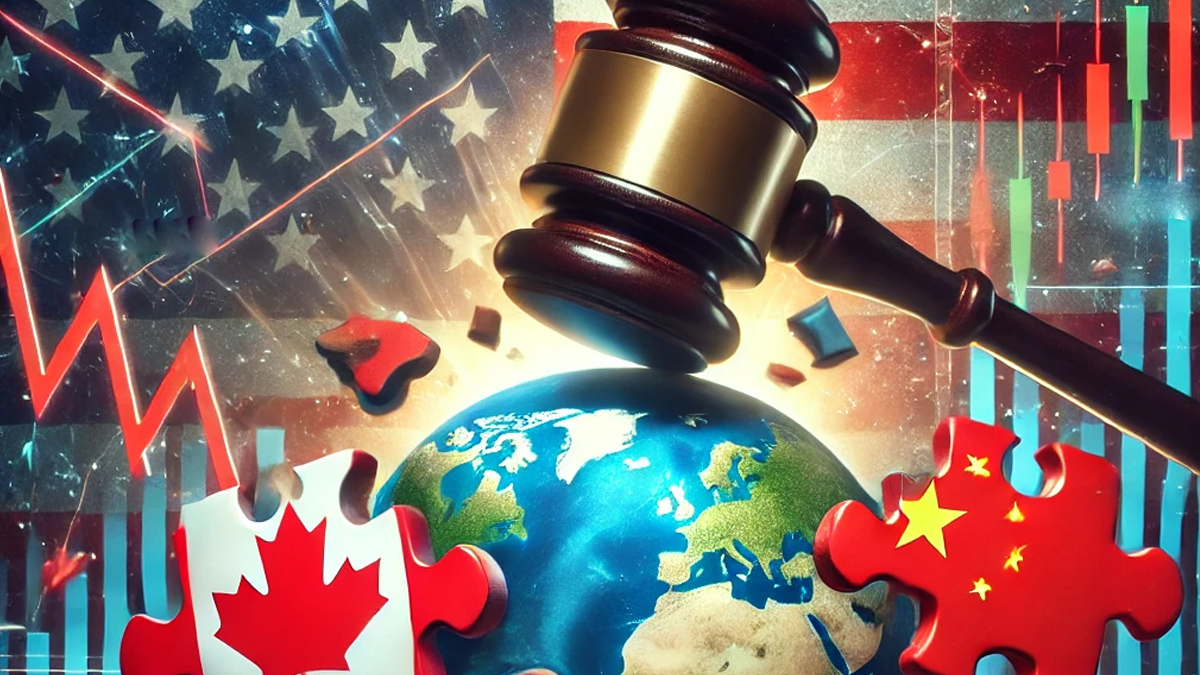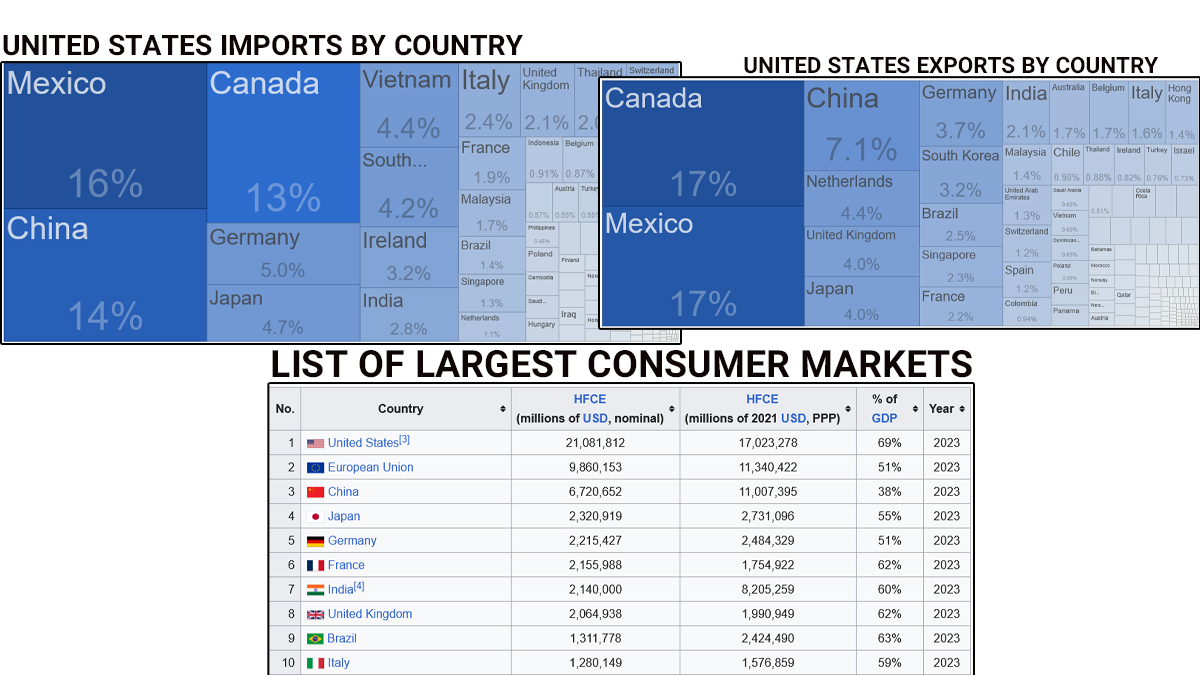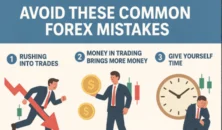
Updated on 23 October 2025
🔹 U.S. and United Kingdom Agree on Tariff Relief Deal
In May 2025, the U.S. and the U.K. reached a trade agreement easing Trump-era tariffs on steel, aluminum, and autos. The deal also offered exemptions for aircraft and related components, signaling a partial thaw in transatlantic trade tensions.
🔹 U.S.–EU Framework Capping Tariffs at 15 %
By August 2025, the U.S. and the European Union finalized a framework that caps tariffs on EU goods at 15 %. The move was framed as a step toward stability in transatlantic trade relations after months of uncertainty.
🔹 Partial Truce in the U.S.–China Trade Dispute
Following a series of tariff escalations earlier in 2025, both Washington and Beijing agreed to reduce certain tariffs and restart negotiations. This partial truce temporarily calmed global markets and revived limited agricultural trade.
🔹 Heavy Tariffs Imposed on Brazilian Imports
In mid-2025, the U.S. levied new tariffs on Brazilian goods—up to 40 % under national-security grounds and an additional 10 % “reciprocal tariff.” The move was justified as protecting U.S. industries from “foreign threats,” but drew criticism from Latin American trade blocs.
🔹 India Hit with 50 % Tariffs Over Russian Oil Purchases
The U.S. administration targeted Indian exports with a 50 % tariff, citing India’s continued purchases of discounted Russian crude. The decision added strain to U.S.–India economic relations, already tense over technology and defense policy differences.
🔹 U.S. Soybean Exports to China Collapse Permanently
By October 2025, agricultural economists concluded that American soybean farmers have likely lost China as a sustainable export market. Despite limited purchases earlier in the year, Chinese buyers have shifted permanently to Brazil and Argentina.
Updated on 8 May 2025
🇺🇸 U.S. Trade Actions and Domestic Impact
- Tariffs on Chinese Goods: President Trump imposed 145% tariffs on Chinese imports, significantly affecting the U.S. toy industry, which relies heavily on Chinese manufacturing. This move is expected to lead to higher prices and potential shortages ahead of the holiday season.
- Trade Agreement with the UK: The U.S. is set to announce a major trade agreement with Britain, marking the first bilateral deal since the recent tariff implementations. Details are forthcoming, but the agreement comes amid a 90-day pause on elevated tariffs and ongoing negotiations with over 70 countries.
🌍 International Responses and Economic Effects
- China’s Export Slowdown: In April, China’s export growth slowed sharply due to the new U.S. tariffs. Economists forecast a significant drop in exports and imports, signaling economic strain. China has responded with its own tariffs and export curbs, particularly on rare earth elements.
- EU’s Strategic Delay: European Union capitals are urging the European Commission to delay retaliatory actions against U.S. tariffs until after the NATO summit in June. This approach aims to avoid conflict with the U.S. and ensure a cooperative outcome at the summit.
🧩 Diplomatic Developments
U.S.-China Trade Talks: Efforts by China to address the fentanyl crisis have opened the door to renewed trade talks with the U.S. High-level negotiations are planned in Switzerland, aiming to de-escalate the tariff tensions that have disrupted global markets.
Updated on 26 April 2025
Trump Declares Tariffs a “Total Victory”
In a Time magazine interview, President Trump stated that maintaining high tariffs for another year would signify a “total victory” for his administration. He emphasized that the current 10% universal tariff and the 145% tariff on Chinese imports are designed to benefit the U.S. economy and encourage domestic production.
Conflicting U.S.–China Negotiation Claims
President Trump claimed that trade talks with China were progressing, asserting that Chinese President Xi Jinping had reached out to him. However, Chinese officials denied any ongoing negotiations and criticized the U.S. for spreading misinformation. Despite the tension, China exempted some U.S. medical imports from high tariffs, indicating a possible de-escalation.
Shein and Temu Raise Prices Ahead of New Tariffs
Chinese online retailers Shein and Temu increased product prices in anticipation of a 120% tariff set to take effect on May 2, 2025. This tariff ends the de minimis exemption, which previously allowed goods under $800 to enter the U.S. duty-free. The price hikes have raised concerns about the impact on low-income American consumers.
Consumer Confidence Plummets Amid Trade War
U.S. consumer confidence dropped sharply, reaching one of the lowest levels on record. A University of Michigan survey reported a 32% decline in economic expectations since January, the steepest since the 1990s recession. The decline is attributed to fears over inflation and economic slowdown tied to the new tariffs.
China Holds Firm in Trade Standoff
Analysts suggest that China holds a strategic advantage in the trade war due to its economic leverage and lack of internal political pressure. China demands the complete removal of tariffs before engaging in negotiations, while the U.S. faces growing domestic dissatisfaction and political challenges.
Updated on 17 April 2025
🇺🇸 U.S. and China at Impasse Over Trade Talks Amid Escalating Tariffs
As of April 17, 2025, the U.S. and China remain at a standstill regarding the initiation of trade negotiations. The U.S. has intensified tariffs on Chinese imports, with new rates reaching up to 245%, according to a White House fact sheet. In response, China has criticized the tariffs as irrational and raised its own levies on U.S. goods, refusing to engage in talks unless they are based on mutual respect and equality.
🛍️ Temu and Shein Warn of U.S. Price Hikes Due to Trump Tariffs
Starting April 25, 2025, Chinese fast fashion retailers Temu and Shein will raise prices for U.S. consumers in response to new tariffs imposed by former President Donald Trump. These tariffs include duties up to 145% on Chinese imports and the repeal of the “de minimis” exemption, which previously allowed shipments under $800 to enter the U.S. duty-free. Under the new rules, packages will be taxed at $75 per item, rising to $150 by June 1. In reaction to the tariffs and increased costs, both companies have slashed their advertising budgets.
📉 U.S.–China Decoupling Becomes Reality as Trade Halts
The long-anticipated economic decoupling between the U.S. and China has become a reality with the imposition of tit-for-tat tariffs effectively halting bilateral trade. The World Trade Organization (WTO) projects that U.S.–China trade will nearly cease in 2025, and global goods trade is expected to shrink by 0.2%, reversing the prior year’s 3% growth. Amidst the uncertainty, the Trump administration plans to negotiate with other nations entangled in reciprocal tariffs within the coming 90 days.
🌐 Chinese Exporters Pivot to Non-U.S. Markets Amid Trade War
At China’s biannual Canton Trade Fair in Guangzhou, exporters emphasized the urgent need to pivot toward non-U.S. markets amid escalating trade tensions. The backdrop of the fair was heavily influenced by U.S. President Donald Trump’s imposition of sweeping 145% tariffs on all Chinese imports. In retaliation, Beijing has levied 125% tariffs on American goods. These measures underscore the strained economic relationship between the two nations and highlight the broader repercussions of the trade war.
🧠 China Focuses on Technological Self-Sufficiency Amid Trade War
In response to President Trump’s steep tariffs on Chinese imports—initially 54% and later over 100%—China has retaliated with similar measures against U.S. goods, deepening the trade war. Economist Yasheng Huang of MIT argues that China, led by President Xi Jinping, is unlikely to make significant concessions because they perceive the Trump administration as unreliable. Despite economic strain, especially in the property sector and stagnant GDP growth, China emphasizes technological self-sufficiency in areas like EVs and A.I., which ironically increases dependency on foreign markets due to domestic overcapacity.
Updated on 12 April 2025
U.S.-China Trade War Escalates Amid Taiwan Tensions
Former President Donald Trump’s imposition of 145% tariffs on Chinese imports has led Beijing to retaliate with 125% tariffs on U.S. goods. Analysts warn that this escalating trade war could trigger a military conflict, especially concerning Taiwan, with fears that China might use the situation to assert control over the region.
Democrats Criticize Trump’s Tariff Strategy
Democratic leaders have expressed disapproval of Trump’s broad and unpredictable tariff policies, arguing they create economic instability. While not opposing tariffs entirely, they advocate for targeted measures that uphold labor and product standards, contrasting with Trump’s sweeping approach.
Tech Industry Faces Challenges Due to Tariffs
The tech sector, particularly smartphone manufacturers, is grappling with increased production costs resulting from tariffs on Chinese goods. Companies like Apple may divert funds from research and development to offset these costs, potentially hindering innovation and delaying new product launches.
Chinese Social Media Mocks U.S. Tariff Policies
In response to the trade tensions, Chinese social media has circulated AI-generated images and videos satirizing U.S. figures like Trump and Elon Musk, depicting them in factory settings. These posts, amplified by Chinese officials, symbolize the perceived impact of U.S. tariffs on domestic manufacturing.
Florida Small Business Sues Over Tariffs
Emily Ley, CEO of Simplified, a women-owned stationery company in Florida, has filed a lawsuit against Trump, claiming that the 145% tariffs on Chinese imports have significantly increased her company’s production costs. Represented by a Libertarian legal group, the suit challenges the legality of the tariffs under the International Emergency Economic Powers Act.
Auto Industry Warns of Tariff Impact
Industry leaders caution that Trump’s proposed 25% tariffs on Canadian and Mexican goods could severely affect the auto sector. The increased costs may lead to higher vehicle prices for consumers and disrupt the integrated supply chains that cross borders multiple times during production.
Federal Reserve Highlights Economic Risks of Tariffs
Federal Reserve Chair Jerome Powell has indicated that the new tariffs could lead to higher inflation and slower economic growth in the U.S. The central bank is monitoring the situation closely, with concerns that the tariffs’ impact may be more significant than initially anticipated.
Canadian Provinces Respond to Tariff Threats
In light of Trump’s tariff threats, Canadian provinces like Ontario and New Brunswick are considering retaliatory measures. Ontario Premier Doug Ford has proposed a 25% surcharge on electricity exports to the U.S., while New Brunswick is evaluating options to minimize harm to its economy while responding effectively.
Updated on 9 April 2025
Key Headlines:
- EU Countries Set to Approve First Retaliation Against U.S. Tariffs
European Union nations are poised to implement countermeasures in response to U.S. tariffs on steel, aluminum, and automobiles. The EU plans to impose 25% tariffs on various U.S. imports, including motorcycles and clothing, affecting goods worth €21 billion. - China Hits U.S. with 84% Retaliatory Tariffs After Trump’s Sweeping Levies Go Into Effect
Following the U.S. enforcement of a 104% tariff on Chinese imports, China announced an 84% tariff on all U.S. goods, effective April 10. Additionally, China has redlisted several American companies, intensifying the trade conflict. - Canada Adds More Retaliatory Tariffs as Trump’s Trade War Hits the World
In reaction to U.S. tariffs on Canadian automobiles, steel, and aluminum, Canada has imposed reciprocal tariffs on U.S. vehicles. These measures aim to counteract the economic impact of U.S. trade policies.
Summary:
The United States, under President Donald Trump, has initiated substantial tariffs affecting numerous countries, citing unfair trade practices. In retaliation, affected nations, including China, the European Union, and Canada, have implemented their own tariffs targeting U.S. goods. These escalating measures have heightened fears of a global trade war, with potential implications for international markets and economies.
Updated on 8 April 2025
As of April 8, 2025, the United States has implemented several tariffs affecting multiple countries:
Trump Escalates Trade War: Threatens 50% Tariff Hike on Chinese Imports :
On April 7, 2025, Donald Trump intensified the U.S.-China trade war by threatening an additional 50% tariff on all Chinese imports unless China retracts its 34% retaliatory tariffs by April 8.
This move would bring total U.S. tariffs on Chinese goods to 104%. China responded defiantly, vowing to “fight to the end” and denouncing the U.S. actions as economic bullying.
Global markets have reacted with sharp declines, but Trump remains firm, calling the move essential for fair global trade.
As of April 8, 2025, the United States has implemented several tariffs affecting multiple countries:
Source : WikiPedia
Canada:
- Tariffs Imposed by the U.S.: On March 4, 2025, the U.S. imposed a 25% tariff on Canadian imports and a 10% tariff on Canadian energy products.
- Canadian Response: In retaliation, Canada imposed a 25% surtax on approximately C$30 billion worth of U.S.-origin goods effective March 4, 2025. Additionally, Canada proposed a second round of tariffs on an additional C$125 billion worth of U.S. goods, with public consultations concluding on April 2, 2025.
Mexico:
- Tariffs Imposed by the U.S.: The U.S. announced a 25% tariff on all Mexican goods starting March 4, 2025.
- Mexican Response: Mexico has indicated plans to implement countermeasures in response to the U.S. tariffs, although specific details are pending.
China:
- Tariffs Imposed by the U.S.: The U.S. increased tariffs on Chinese goods from 10% to 20% on March 4, 2025.
- Chinese Response: China retaliated with tariffs ranging from 10% to 15% on U.S. meat and agricultural products, suspended U.S. lumber imports, and revoked soybean import licenses for three U.S. firms.
European Union:
- EU Response: The European Union announced plans to impose tariffs on €4.5 billion of U.S. consumer goods and an additional €18 billion on U.S. steel and agricultural products by mid-April 2025, in response to U.S. trade measures.
Additional Measures:
Tariffs on Countries Importing Venezuelan Oil: On March 24, 2025, President Trump signed Executive Order 14245, imposing a 25% tariff on all goods imported into the U.S. from any country that imports Venezuelan oil, effective April 2, 2025.
Updated On 8 February 2025
The U.S. President Starts a Tariff War
Recently, the President of the United States has launched a tariff war by imposing heavy tariffs on Canada, Mexico, China, and the Eurozone.
Reasons for the U.S. Tariff War
- Illegal Immigration – The U.S. government wants to pressure Canada and Mexico to take stricter actions against illegal immigration. By imposing tariffs, they aim to make these countries enforce tougher policies to prevent illegal migrants from entering the U.S.
- Drug Trafficking – One of the main reasons behind the tariffs is the illegal drug trade, especially the smuggling of fentanyl from neighboring countries. The U.S. administration wants to force these nations to put more effort into stopping the flow of drugs.
- Supporting Domestic Products – The government is working to create a system that protects American industries. Since the U.S. is currently the largest consumer market in the world, these tariffs aim to boost local production and reduce dependence on foreign goods.
Why Can the U.S. Impose Tariffs and Win?
Over the years, the U.S. has become the world’s largest consumer market. No other country comes close in terms of consumption power.

Because of this, the U.S. can use tariffs to cause significant disruptions in the economies of the countries it imports from. Meanwhile, these countries have limited options to retaliate effectively.
Dollar Index Technical Analysis: Predictions for the Next 2 Years
Consequences of Tariff War
Currently, the U.S. economy is facing challenges, and the tariff war is not bringing immediate positive results. In the long run, it may benefit domestic industries that rely on American consumers. However, these benefits will take time to materialize.
Other countries may lose trust in the U.S. as a reliable trade partner. Facing economic difficulties, they will start looking for alternative solutions and new trade partners.
If the tariff war continues, it could lead to a major global economic recession. Countries affected by the tariffs might struggle with financial instability, pushing the world economy into a crisis.
❓ Frequently Asked Questions About tariffs (FAQs)
The Trump tariff war is an ongoing trade conflict initiated by former and current U.S. President Donald Trump. It began in 2018 with sweeping tariffs on Chinese goods and has since expanded to include multiple countries such as Canada, Mexico, and members of the European Union. In 2025, the war intensified with new tariffs reaching up to 104% on Chinese imports, aiming to pressure trade partners into more favorable agreements for the U.S.
Trump launched the tariff war with China in early 2018, citing unfair trade practices, intellectual property theft, and a massive trade imbalance. The conflict has continued into his second term, with a sharp escalation in April 2025, where he threatened an additional 50% tariff unless China withdraws its retaliatory measures.
In 2018, Trump imposed a 25% tariff on steel and 10% on aluminum from several countries including China, sparking the first major wave of trade conflicts. Additional tariffs targeted over $250 billion worth of Chinese goods, marking the beginning of a global tariff war.
Historically, tariffs contributed to sectional tensions before the American Civil War. The Tariff of Abominations (1828) favored the industrial North at the expense of the agrarian South, leading to resentment and the Nullification Crisis. While not the sole cause, tariffs symbolized the growing economic and political divide between regions.
Tariffs often trigger retaliatory actions. When one country raises import taxes, affected nations respond with their own tariffs, leading to escalating tensions known as a trade war. These tit-for-tat measures disrupt global supply chains and economic stability.
Tariffs can protect local industries and jobs in the short term but often lead to higher prices for consumers, disrupted global trade, and long-term inefficiencies. Their success depends on context, execution, and international response.
In 2025, the U.S. imposed 25% tariffs on Canadian imports and 10% on energy products, citing national interest. Canada responded with retaliatory tariffs on C$155 billion worth of U.S. goods. The tariffs have strained economic ties, raised prices, and hurt Canadian exporters and manufacturers dependent on U.S. trade.
Tariffs can:
Raise costs for consumers
Trigger inflation
Disrupt supply chains
Cause international tension
Hurt exporters due to retaliation
In essence, while designed to protect domestic industry, they often backfire economically.
Yes. Tariffs increase the cost of imported goods, which trickles down to consumers and businesses. In 2025, analysts link rising prices in sectors like automobiles, electronics, and agriculture directly to heightened tariffs under the ongoing trade war.
High tariffs lead to reduced trade volumes, price hikes, and economic uncertainty. They deter international investment and can push industries into recession. The 2025 escalation of tariffs, especially with China and Canada, has already caused global market instability.
Economists are divided, but many warn that the current tariff environment, supply chain strains, and retaliatory actions in 2025 are increasing the risk of a global recession, especially if the conflict persists without diplomatic resolution.
The last global recession occurred in 2020, triggered by the COVID-19 pandemic. It was followed by a sharp recovery in 2021–2022. However, with the 2025 tariff escalations and slowing global growth, many fear a new downturn is looming.







